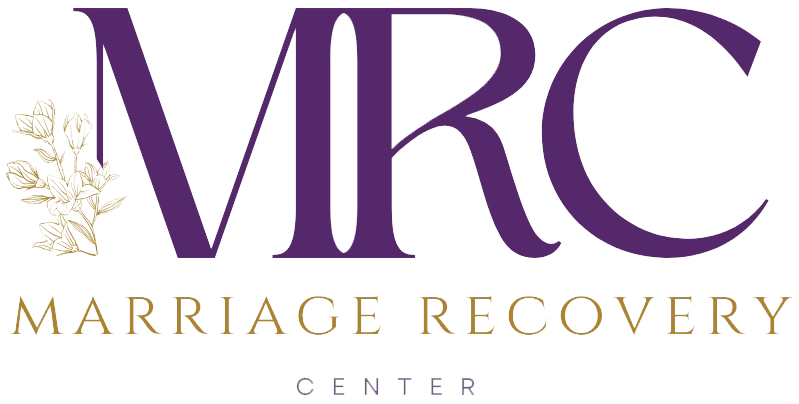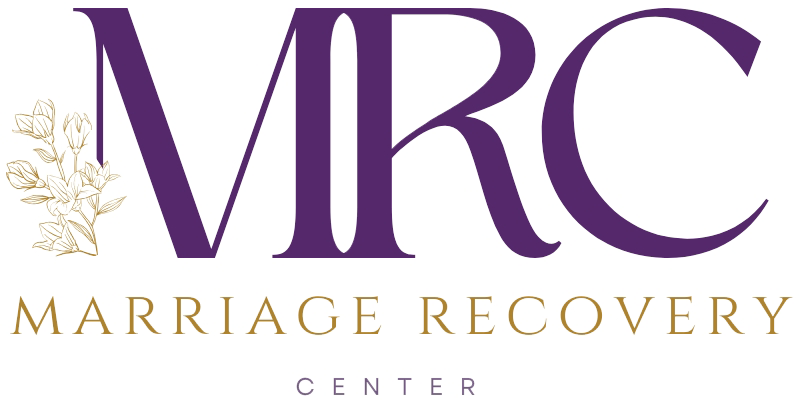1. The Path To Restoration : Repentance
Is reconciliation possible after trust has been broken? In Part 1 of our 4-Part series on The Path to Restoration, Dr. Hunt talks about the concept of repentance – what it is and what it isn’t – and its fundamental role in restoring broken trust.
The Path To Restoration: Repentance
Welcome to the first part of our four-part series on the major processes involved in the restoration of a marriage. In this initial installment, we will explore the concept of repentance – what it is, what it isn’t, and what it looks like in practical life. Repentance is often misunderstood and underestimated, often reduced to a simple apology. However, it goes far beyond just saying, “I’m sorry.”
Owning Responsibility
Repentance starts with an ownership of responsibility, and it’s essential to be specific. It’s about one person coming to another and saying, “I know what I’ve done.” They can describe their actions, words, or behaviors clearly without excuses, defensiveness, or blame-shifting. It’s a genuine acknowledgment of one’s actions.
Understanding the Cost
The next step is understanding the cost of your actions on the other person. This goes beyond a general apology; it’s about recognizing how you’ve made them feel. It’s about empathy and taking the time to consider how your words and actions may have impacted them. This step requires a deep understanding of their emotions and experiences.
Commitment to Change
Repentance involves a commitment to do things differently. It means turning around and walking 180 degrees in the opposite direction from your past behavior. To make this commitment meaningful, you need a plan in place. What will it look like to change? Do you have the necessary skills and the right mindset for this transformation?
Acknowledging the Debt
Repentance also entails recognizing that you owe the other person a debt – not a duty-bound obligation but a sense of indebtedness rooted in love. Part of love’s responsibility is repairing what has been broken as best as possible. This acknowledgment of a debt is born out of humility and surrender to the truth.
Asking for Forgiveness
The final step is asking the other person for forgiveness. Many people stop short of this crucial step in repentance. It requires humility because forgiveness cannot be demanded or commanded. It’s a choice the other person must make, and you must ask for it sincerely and humbly.
It’s important to note that up to this point, repentance is primarily verbal, but it must be translated into action. It’s not just about what you say; it’s about how you live day to day, moment to moment, to show that you are genuinely walking differently with the person you’ve hurt.
Repentance can be a challenging process, especially if your harmful behavior is deeply ingrained. But it’s essential to understand that it’s a process and not an excuse for ongoing bad behavior. If genuine change is happening, the occasional setback may not have a significant impact.
However, if you find yourself struggling to repent due to a hardened heart or a lack of humility, it’s okay to start where you are and ask for healing in your heart first. Remember, it’s a journey, and progress takes time.
If you’ve asked for forgiveness, be patient with the other person as their feelings may take time to catch up with their decision to forgive. Make room for their pain and be gracious. This is part of the debt you owe.
2. The Path To Restoration : Forgiveness
Understanding Forgiveness
In part two we focus on forgiveness and its pivotal role in the healing process.
Forgiveness: A Necessary Act
Forgiveness, often viewed as a standalone concept, serves a crucial purpose. It liberates your soul from bitterness, offering emotional relief.
The But in Forgiveness
However, forgiveness without repentance lacks the power to fully restore a relationship. Repentance, marked by genuine acknowledgment, commitment to change, and understanding the harm caused, must precede forgiveness.
The Complexity of Amends
While making amends sounds good in theory, some harms can’t be fully rectified. Forgiveness remains a gift – a response to a real debt, emotional and relational.
A Choice and an Act of Will
Forgiveness is a choice backed by willpower. It involves canceling the debt and actively choosing not to entertain thoughts of it, even if feelings take time to align.
The Power of Sacrifice
Forgiveness may not feel fair, as it requires sacrificing desires for justice or retribution. It’s an act of paying a price for someone else, leading to profound freedom and transformation.
The Beginning, Not the End
Forgiveness sets the stage for restoration but isn’t the final step. Trust rebuilding is essential for true restoration, which we’ll explore in part three.
Seeking Support
Remember, this journey is challenging. Seek guidance and support when navigating forgiveness in your relationship. You’re not alone, and together, healing and restoration are possible. Stay tuned for part three, where we delve into trust rebuilding.
3. The Path To Restoration: Rebuilding Trust
Part Three of a Four-Part Series on the Restoration of a Marriage
In this four-part series on the restoration of a marriage, we have explored the essential steps necessary to mend a broken relationship. In part one, we discussed the importance of repentance, the act of acknowledging one’s wrongdoings and taking responsibility for them without excuses. Part two delved into the concept of forgiveness, emphasizing that it is a free gift offered in response to genuine repentance. Now, in part three, we turn our focus to the pivotal process of rebuilding trust.
The Significance of Trust
Trust is the cornerstone of any healthy relationship, especially in the context of a marriage. It is the bedrock upon which love, intimacy, and transparency are built. Trust assures us that our partner will love us, honor our vulnerabilities, protect our secrets, and treat us with kindness. Without trust, a marriage can easily deteriorate into something less than what it was meant to be.
Earning Trust: The Journey
Trust is not freely given; it must be earned. Rebuilding trust after a betrayal is a gradual and often arduous process, which involves answering critical questions:
- Consistency Over Time: Trust hinges on observing consistent behavioral changes over an extended period. It’s not just about doing better for a day or a week; it’s about sustained efforts to walk differently and align actions with repentant words. Progress, not perfection, is the goal.
- Handling Setbacks: Trust is also about how one handles setbacks. Inevitably, there may be moments of relapse into old behavior. The key is in recognizing these lapses promptly, taking full responsibility, and seeking forgiveness sincerely. It’s the difference between saying, “I did it again, and I’m committed to getting it right” and resorting to justifications or defensiveness.
- Feelings Catching Up: Trust doesn’t always coincide with forgiveness. Just as healing a physical injury takes time, emotional healing requires patience. While forgiveness is a choice, the emotional wounds may still be tender, and it’s essential to allow feelings to catch up with the decision to forgive.
The Controversy Surrounding Trust and Forgiveness
There is a common misconception that forgiveness obligates one to re-enter a relationship with the offender. However, forgiveness merely clears the air and releases the debt. Trust, on the other hand, remains a separate issue and must be rebuilt through consistent actions over time.
The Role of Shame
Shame can hinder the process of rebuilding trust. Those who have caused harm must learn to let go of shame and embrace forgiveness fully. Shame often leads to hiding or acting out, which can further damage trust. Instead, facing the pain without carrying guilt is essential for healing.
In conclusion, rebuilding trust is a complex and multifaceted process that requires open communication, vulnerability, and patience. It is the bridge that can lead to the restoration of a marriage or any broken relationship. While trust may take time to rebuild, its transformational power can profoundly impact the quality and depth of any relationship. If you find yourself navigating this challenging path, seek support and guidance, as healing is possible when both parties are committed to change and growth.
The Path To Restoration: Reconciliation
Exploring the Journey of Rebuilding Relationships
In Part Four of our exploration, we delved into the concept of embracing the new when it comes to relationships. We emphasized that the impossibility of rewinding the clock in any relationship, and so, when we embark on the path to restoration and reconciliation, it’s not about returning to what once was. It’s about accepting the new reality, understanding that the past is just that – the past.
Embracing the New Season
“There is an Indian proverb that says you can’t step in the same river twice,” and this wisdom applies to relationships as well. You can’t return to something that no longer exists. Therefore, when you embark on the journey of reconciliation, it’s essential to acknowledge that you’re moving forward into a new season of your relationship.
This new season may still involve the same players, the same home, the same children, and the same routines, but the marriage itself has been transformed and forever altered by what you’ve experienced together.
Grieving What Was Lost
Coming into the new season also includes a period of grief and letting go. There might be aspects of the past that were precious to you and are no longer present. It’s natural to feel a sense of loss for what once was.
Grief is a crucial part of the path towards something new. In relationships, just as in life, new growth often sprouts from the seeds of grief. So, if you find yourself feeling wistful for the way things used to be, it’s okay. Acknowledging these feelings together can be a healing process.
Forging a Joint Vision
Moving forward involves forging a joint vision for your new relationship. This is an opportunity to create something better than what existed before. It’s a chance to align your individual growth with your shared journey.
Consider what interests you both, even if they’re different from your historical shared interests. Make a list of things you’ve always wanted to do but haven’t. This is a time for exploration – from reading books together to trying adventurous activities.
Finding Common Ground
Common ground can be discovered in trivial pursuits and deeper aspects of life. Engage in conversations about current events or shared values. It might be about political beliefs or a shared cause you want to support. The question is, how can you invest your lives together in something meaningful?
Combining your skills, interests, and passions can lead to a more fulfilling shared purpose.
Reflection on Life Stages
Life doesn’t stop changing after adulthood; people continue to evolve and grow. The individuals who fell in love and got married in the past are not the same people today. Relationships must adapt to these changes.
Sometimes, significant changes in values or interests can challenge a relationship. Navigating these changes requires respectful communication and a willingness to make room for each other’s perspectives.
Adjusting to Empty Nests
If you’re at a stage where your children have grown and left home, you may find yourselves in a new phase of your relationship. It’s an opportunity to rediscover each other without the distractions of parenthood. What have you missed about each other that you need to know?
Conclusion
The path to restoration and reconciliation is an ongoing journey. It requires continuous effort, communication, and adaptation. Like a growing plant, relationships need constant care and maintenance.
This process isn’t about laboring over the relationship but recognizing that it’s worth the effort. It’s about understanding that your partner and your relationship are worth pursuing every day. Embrace the new season, build a shared vision, find common ground, and continue to grow together. In doing so, you can create a relationship that is not a return to the past but a celebration of the present and a promise for the future.
To learn how we can help, reach out to us at (206) 219-0145 or info@marriagerecoverycenter.com to speak with a Client Care Specialist
Also read: What is Brainspotting and How Does it Work
About Dr. Hawkins:
The internet is inundated with hyperbole and misinformation about narcissism, leaving many people confused and hopeless. Get the facts on narcissism and emotional abuse from someone who has been researching, writing about and treating narcissism and emotional abuse for over a decade.
Dr. Hawkins is a best-selling author and clinical psychologist with over three decades of experience helping people break unhealthy patterns and build healthier relationships.
He is the founder and director of the Marriage Recovery Center and the Emotional Abuse Institute which offers education, training and counseling for people who want to break free of, and heal from, emotional abuse. Whether the perpetrator of the abuse is your spouse, partner, parent, boss, friend or family member, we offer practical advice for anyone trapped in a toxic, destructive relationship.
In addition to narcissism & emotional abuse, you’ll learn about the lesser known forms of abuse, including covert abuse, reactive abuse, spiritual abuse, secondary abuse, relationship trauma and much more.








